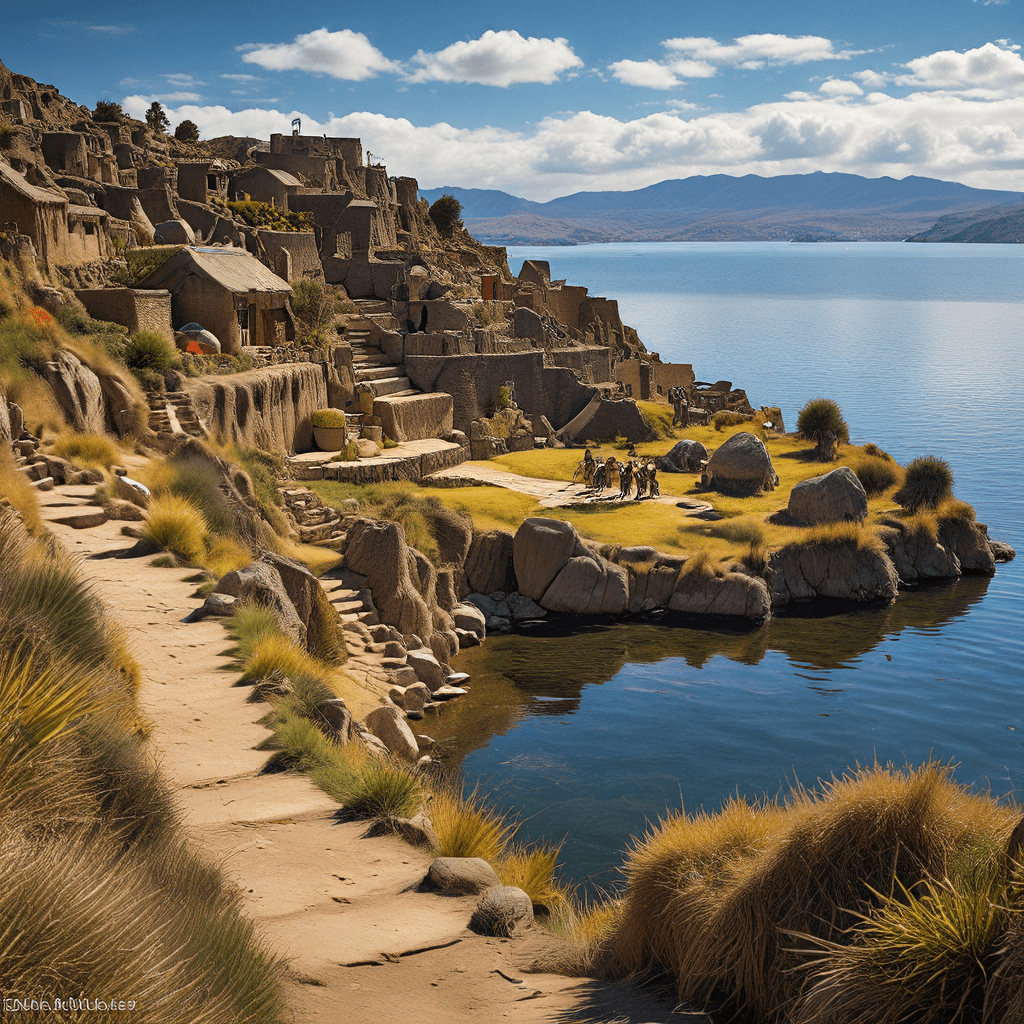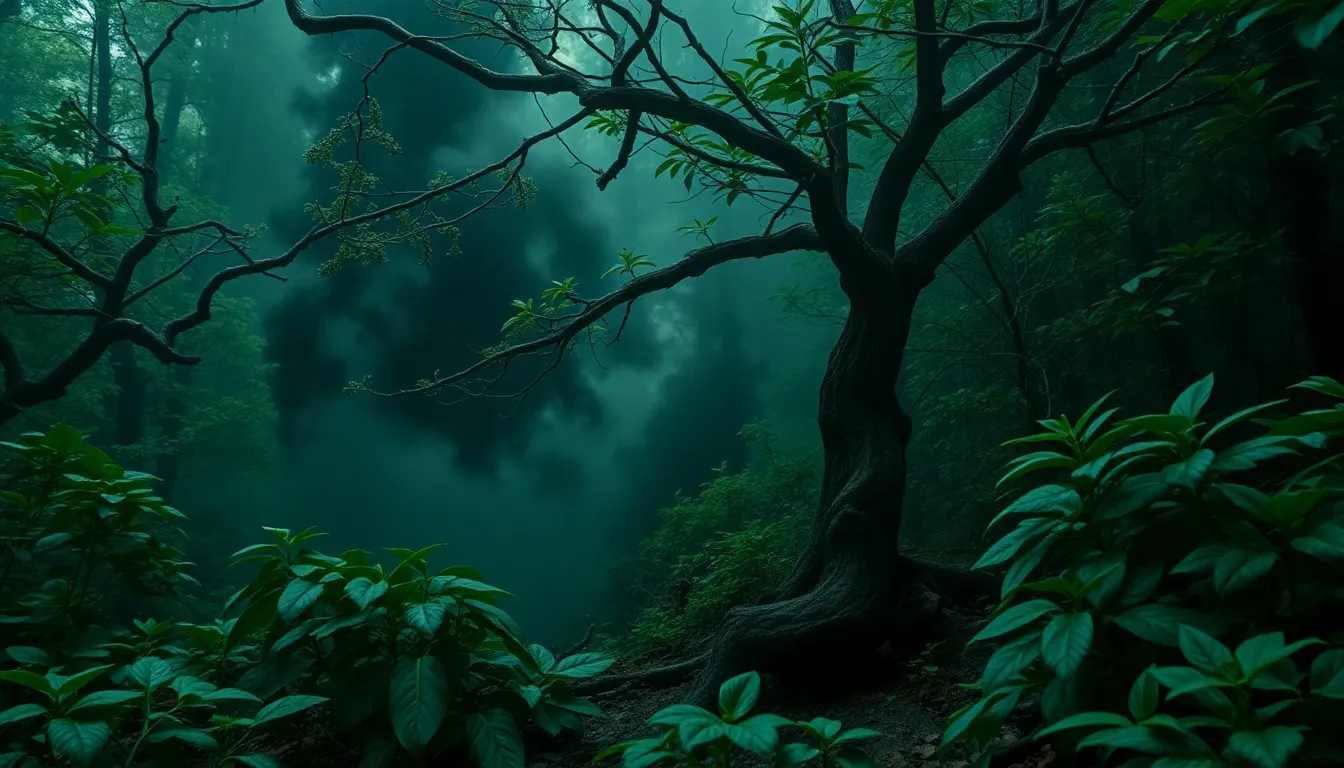The Myth of Viracocha and the Creation of the World
The Incan myth of Lake Titicaca, a vast body of water nestled high in the Andes Mountains, tells the story of the creation of the world and the origins of their civilization. This ancient tale, passed down through generations by word of mouth, plays a vital role in understanding the Incan worldview, their reverence for nature, and their connection to the divine.
At the heart of this myth lies Viracocha, the supreme creator god. In the beginning, the world was nothing but a chaotic expanse of darkness and emptiness. Viracocha emerged from the depths of Lake Titicaca, bringing light and order to the universe. He sculpted the mountains, carved the valleys, and created the sun, moon, and stars. His power was immense, and his actions were driven by a desire to create a world suitable for life.
This creation story resonates with the Incan people's understanding of the world. The harsh, yet beautiful, landscape of the Andes, with its towering peaks and deep valleys, reflects the dramatic power of Viracocha's creation. The existence of the celestial bodies, which the Inca relied on for agriculture and navigation, underscores the importance of Viracocha's influence in their everyday lives.
The myth of Viracocha's creation acts as a foundation for the Incan understanding of the world. It reinforces their belief in a divine order, their connection to the natural world, and their responsibility to maintain balance within the universe. The world was not just a random occurrence; it was a deliberate act of creation by a powerful and benevolent god.
Lake Titicaca: The Womb of the Inca Empire
Lake Titicaca, the highest navigable lake in the world, holds a special place in Incan mythology. The vast expanse of water, cradled by the majestic Andes Mountains, is considered the birthplace of the Inca civilization and the womb from which the first humans emerged.
The Incan people viewed Lake Titicaca as a sacred space, a reflection of the celestial realm, and a source of life-giving energy. They believed that Viracocha, the creator god, had emerged from the depths of the lake and had created the world from its waters, making the lake a symbol of creation and renewal.
The lake's significance went beyond mere symbolism. It was crucial to the Inca people for its abundant resources. Its waters provided sustenance for their crops, supported their fishing communities, and served as a vital trade route. The lake's diverse ecosystem, with its islands, reeds, and varied wildlife, offered the Inca with a rich source of materials for their daily lives.
Beyond its practical uses, Lake Titicaca held deep spiritual significance. The Inca practiced rituals and ceremonies on its shores, offering sacrifices to appease the gods and seeking guidance for their community. The lake also served as a site for pilgrimages, drawing people from distant regions to its sacred waters.
Lake Titicaca's importance in the Incan culture is evident in the names given to ancient ruins and sacred sites that surround it. The name "Titicaca" itself is believed to mean "rock of the puma" in Aymara, a language spoken by the indigenous people of the region. The puma, a powerful and revered animal in Incan cosmology, symbolizes strength and royalty, further highlighting the importance of the lake in the Incan world.
The Sacred Island of the Sun and Moon: Where the Inca Origins Began
Within the shimmering expanse of Lake Titicaca, two islands stand out as particularly sacred: the Island of the Sun and the Island of the Moon. These islands are not merely geographical locations; they are the epicenter of the Incan origin myth.
The Island of the Sun, located in the northern part of the lake, is revered as the birthplace of the Inca lineage. It was here that Manco Capac, the first Inca emperor, and his sister-wife, Mama Ocllo, emerged from the depths of Lake Titicaca. Viracocha, the creator god, had instructed them to rise from the waters and establish a new civilization.
The island's name reflects its pivotal role in the myth: the Sun god, Inti, was considered one of Viracocha's most important creations, and his presence on the island symbolizes the divine origin of the Inca people.
The Island of the Moon, located in the southern part of the lake, is associated with the Moon goddess, Mama Quilla. It was here that the Inca's ancestors learned the art of agriculture and weaving, skills that were essential to their survival and cultural development. The island's reverence is linked to the worship of Mama Quilla, who, in Incan mythology, is the goddess of fertility, water, and agriculture.
The Island of the Sun and the Island of the Moon are not merely scenic attractions; they are a powerful testament to the Incan belief system, the origins of their civilization, and the enduring power of mythology. The presence of these islands within Lake Titicaca further solidifies its role as the sacred womb from which the Inca civilization emerged.
Viracocha: The Creator God and His Divine Intervention
Viracocha, the central figure in the Incan myth of Lake Titicaca, is more than just a creator god. He is a complex and multifaceted deity who plays a pivotal role in shaping the Incan worldview. His actions are not limited to the initial creation of the world; he continues to intervene in the affairs of humans, guiding their destiny and shaping their lives.
In the myth, Viracocha emerges from the depths of Lake Titicaca, bringing light and order to a chaotic universe. He creates the mountains, valleys, sun, moon, and stars, demonstrating his immense power and creative force. But his role extends beyond creation; he also intervenes in the lives of humans.
Viracocha is depicted as a benevolent god, concerned with the welfare of his creations. He guides the first humans, Manco Capac and Mama Ocllo, to emerge from the lake and establishes them as the founders of the Inca civilization. He provides them with knowledge and skills, empowering them to build a successful society.
Viracocha's divine intervention is not limited to the initial establishment of the Inca civilization. He continues to watch over his people, offering guidance and protection. His presence is felt in the natural world, where his power manifests in the elements, the cycles of nature, and the abundance of the land.
The Incan belief in Viracocha's intervention fosters a sense of respect for the divine and a belief in a higher order. It underscores the importance of living in harmony with nature and acknowledging the role of the divine in human affairs.
The Emergence of Man from the Lake: The Inca Cosmology
The Incan myth of Lake Titicaca is not just a story about creation; it is a powerful expression of the Incan cosmology, their understanding of the world and their place within it.
The emergence of Manco Capac and Mama Ocllo from the depths of Lake Titicaca signifies the connection between humanity, the divine, and the natural world. The lake, considered a sacred space, is the source of life, bringing forth not only the first Inca rulers, but also the ancestors of all humanity.
This emergence from the lake is more than just a physical event. It represents a spiritual transition, a passage from the divine realm to the human world. Manco Capac and Mama Ocllo are not just individuals; they are representations of the divine lineage, entrusted with the responsibility of establishing a civilization that reflects the will of Viracocha.
The Incan concept of "Pachamama," the Earth Mother, further reinforces the connection between humanity and the natural world. The Earth is viewed as a living entity, a source of sustenance and a provider of life. The lake, as a significant part of the Earth, reflects the interconnectedness of all elements within the Incan cosmology.
The myth of Lake Titicaca underscores the importance of maintaining balance within the universe. This balance is achieved through a harmonious relationship between humanity, the divine, and the natural world. It is a responsibility that the Inca people took seriously, reflecting their belief in the interconnectedness of all things.
The Incan Concept of Pachamama: The Earth Mother
The Incan myth of Lake Titicaca is deeply intertwined with the concept of Pachamama, the Earth Mother. Pachamama represents the essence of the Earth, a living entity that provides sustenance, life, and fertility.
The Incan people viewed the Earth as a sacred being, deserving of respect and reverence. They recognized the Earth's power to both create and destroy, understanding that their survival depended on maintaining a harmonious relationship with Pachamama.
The myth of Lake Titicaca reinforces the importance of Pachamama. The lake, a vital source of life for the Inca, is seen as a reflection of the Earth Mother's power. The emergence of the first Inca rulers from the lake symbolizes their connection to the Earth, their responsibility to protect her, and their dependence on her bounty.
The Incan connection with Pachamama went beyond mere symbolism. Their agricultural practices, deeply rooted in respect for the Earth, were designed to nourish and sustain the land. They offered sacrifices to appease Pachamama, seeking her blessing for bountiful harvests and a healthy environment.
The concept of Pachamama, as embodied in the myth of Lake Titicaca, underscores the Incan understanding of the interconnectedness of all things. The Earth, the waters, the mountains, and the people are all part of a single, interconnected system. This understanding influenced their daily lives, their values, and their relationship with the natural world.
The Role of Water in Incan Mythology and Rituals
Water plays a central role in the Incan myth of Lake Titicaca, representing life, fertility, and the divine. The lake itself is considered the source of creation, the womb from which the Inca emerged and the foundation of their civilization.
This reverence for water extends beyond the myth. In Incan culture, water was seen as a sacred element, imbued with spiritual power. It was essential for life, sustaining both humans and the natural world. The Inca revered the rivers, lakes, and springs, acknowledging their vital role in the ecosystem.
Water was also a significant element in Incan rituals and ceremonies. They performed offerings to appease the water deities, seeking their blessings for abundant harvests, healthy crops, and protection from droughts. The Inca believed that the water spirits could influence the weather, impacting their agricultural success and the well-being of their communities.
The use of water in rituals reinforced the connection between the Incan people, the divine, and the natural world. They recognized the power of water to sustain life, its importance in the ecosystem, and its connection to the divine realm.
The importance of water in Incan mythology and rituals is further reflected in their artistic expression. The intricate carvings and pottery depicting water deities, the use of water imagery in textiles, and the construction of elaborate irrigation systems all testify to the central role of water in their culture.
The Archaeological Evidence for the Myth: Sites on the Lake
The Incan myth of Lake Titicaca is not merely a story passed down through generations. Archaeological evidence on the shores of the lake provides tangible proof of the myth's historical significance.
The Island of the Sun, where the first Inca rulers are said to have emerged, is home to ancient ruins and temples that attest to its sacred nature. The site of Intiwatana, which means "sun-tying," is a ceremonial stone structure thought to have been used to mark the solstices and to observe the movements of the sun. The presence of these structures on the Island of the Sun reinforces its role as a center of Incan religious and ceremonial life.
The Island of the Moon also holds archaeological treasures. The ruins of a temple dedicated to Mama Quilla, the Moon goddess, can be found on the island's shores. The presence of these ruins underscores the island's significance in the Incan belief system and its connection to the worship of the Moon goddess.
The ancient sites on and around Lake Titicaca, with their intricate stonework, ceremonial structures, and sacred spaces, offer physical evidence of the Incan myth's enduring influence. They serve as a testament to the Incan reverence for the lake, its sacred status, and its importance in their cosmology.
The Modern Significance of the Myth: Tourism and Indigenous Identity
The Incan myth of Lake Titicaca, once a whispered story passed down through generations, now plays a vital role in the modern world. It has become a source of tourism, drawing visitors from across the globe to experience the beauty and mystique of the lake and its surrounding regions.
Lake Titicaca, with its islands, ancient ruins, and vibrant indigenous culture, offers visitors a unique glimpse into the Incan past. The myth serves as a powerful narrative, guiding tourists through the historical sites, explaining the cultural significance of the region, and fostering a deeper understanding of Incan civilization.
The myth of Lake Titicaca also remains central to the identity of the indigenous people living in the region. They continue to practice ancient traditions, ceremonies, and rituals, upholding the cultural legacy passed down through generations. The myth provides a sense of continuity, connecting them to their ancestors, their beliefs, and their shared history.
The modern significance of the myth is not limited to tourism and indigenous identity. It also serves as a reminder of the power of storytelling, its ability to shape cultures, preserve traditions, and inspire generations to come. The Incan myth of Lake Titicaca, with its themes of creation, divine intervention, and the interconnectedness of all things, continues to resonate with people around the world, offering a valuable insight into the human spirit and the enduring power of mythology.
Alternative Theories on the Origins of the Inca Empire
While the Incan myth of Lake Titicaca offers a compelling explanation for the origins of the Inca civilization, other theories exist, challenging the traditional narrative. Some historians and anthropologists argue that the Inca Empire did not emerge from a single origin point but rather developed gradually over time through a process of expansion and assimilation.
They point to archaeological evidence suggesting that various cultures existed in the Andes region prior to the Inca, each contributing to the development of the Incan civilization. This view suggests that the Inca emerged as a dominant force, not through divine intervention, but through political and military prowess.
Other theories suggest that the Inca civilization may have had origins in other regions, possibly influenced by cultures from the Amazon rainforest or the coast. These theories challenge the traditional view of the Inca as a purely Andean civilization, suggesting a more complex and interconnected history.
The existence of alternative theories does not diminish the importance of the Incan myth of Lake Titicaca. While the myth may not offer a purely historical account, it provides a valuable insight into the Incan worldview, their beliefs, and their cultural identity. It serves as a powerful narrative, reflecting their understanding of the world, their relationship with the divine, and their connection to the natural world.
FAQ
Q: Is the Incan myth of Lake Titicaca a true story?
A: The Incan myth of Lake Titicaca is a traditional story passed down through generations. It is not a historical account in the modern sense, but it offers a valuable insight into Incan beliefs and culture.
Q: What is the significance of Lake Titicaca in Incan mythology?
A: Lake Titicaca is considered the birthplace of the Incan civilization, the source of life, and a sacred space. The myth of the lake is central to Incan cosmology, reflecting their understanding of the world, the divine, and their connection to nature.
Q: What is Viracocha's role in the myth?
A: Viracocha is the creator god in the Incan myth, responsible for bringing order to the universe and creating the world. He is also depicted as a benevolent god who intervenes in human affairs, guiding the first Inca rulers and shaping their destiny.
Q: What is the modern significance of the myth?
A: The Incan myth of Lake Titicaca remains a vital part of indigenous identity, inspires tourism, and serves as a reminder of the power of storytelling. It provides a glimpse into Incan beliefs and cultural traditions, fostering a deeper understanding of their civilization.
Q: Are there alternative theories about the origins of the Inca Empire?
A: Yes, there are alternative theories suggesting that the Inca Empire developed gradually over time through expansion and assimilation, or that they may have had origins in other regions. These theories challenge the traditional narrative of the myth while providing additional insights into the complexity of Incan history.




